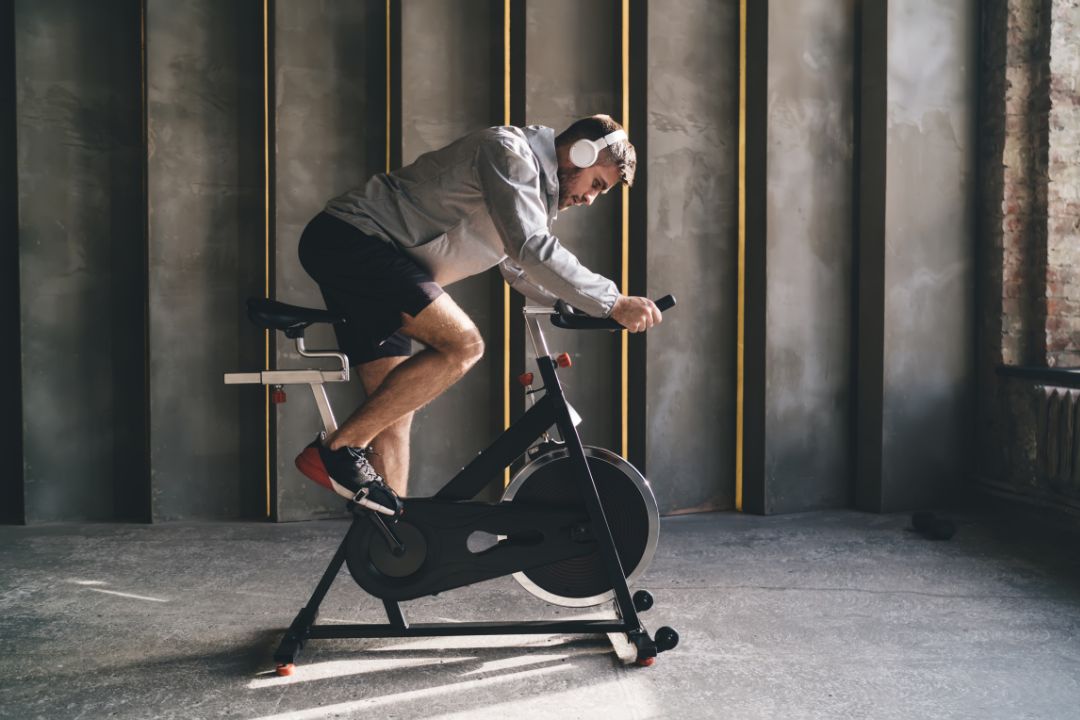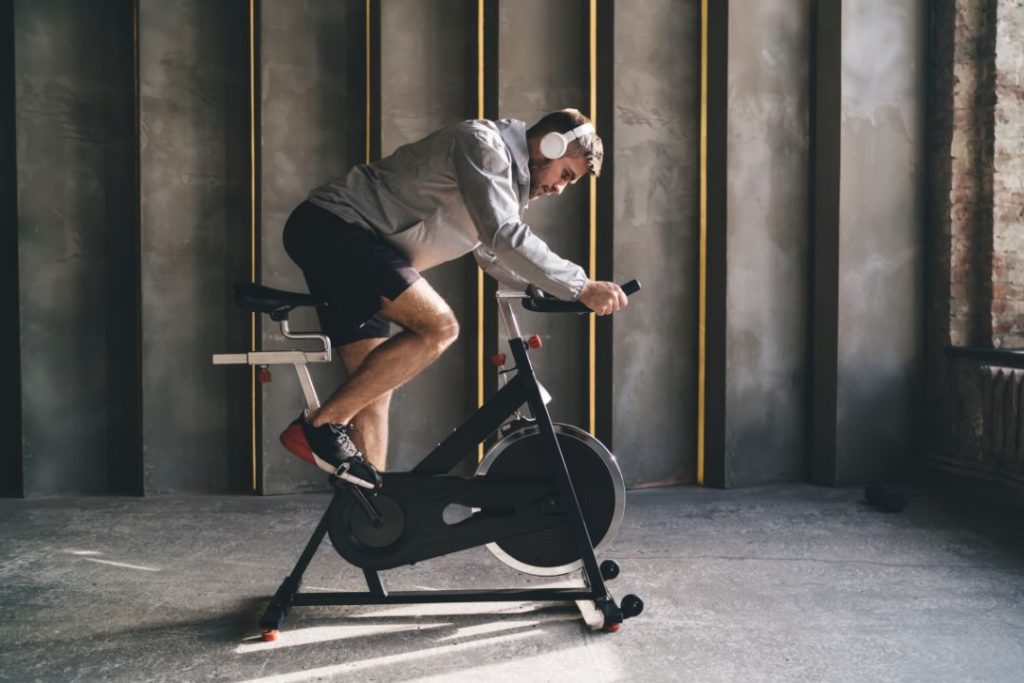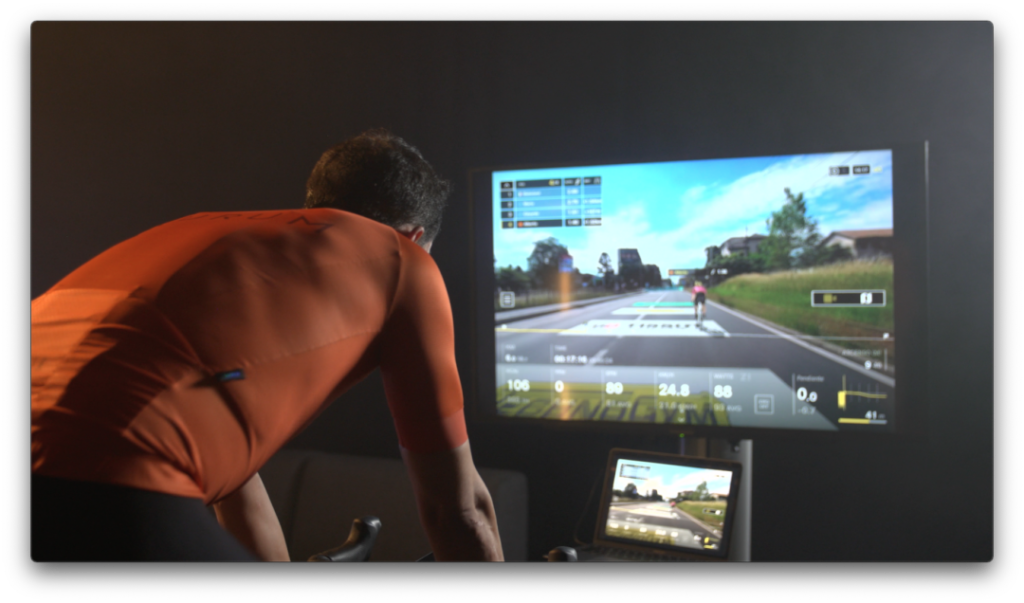Indoor cycling has gained remarkable popularity in recent years, making it an excellent choice for those looking for an efficient and safe way to exercise. Unlike outdoor cycling, indoor cycling allows enthusiasts to stay active in all weather conditions, maximising the benefits of the workout without the interruptions often found outdoors.
Indoor cycling equipment and space
To get started in indoor cycling, the right equipment is essential. A good quality exercise bike is essential. These bikes come in several varieties, from basic models to advanced options with features such as heart rate monitoring and smart connectivity. In addition, it is advisable to invest in a good pair of cycling shoes, a mat to protect the floor and absorb noise, and comfortable, breathable cycling-specific clothing.
The place where indoor cycling takes place is just as important as the equipment. Ideally, this space should be ventilated, temperature-controlled and have enough space to move freely. A good environment significantly increases the quality of training, allowing you to maximise the benefits of indoor cycling.
Effective warm-up techniques
It is essential to understand that a proper warm-up is essential before beginning an indoor cycling session. In addition to initial pedalling at low resistance, it is advisable to perform joint mobility exercises to increase range of motion in key joints such as ankles, knees and hips. Dynamic stretches, such as hip rolls and circular arm movements, help improve flexibility and blood circulation.
In addition, adding a few minutes of moderate pedalling before increasing the main intensity of the workout effectively prepares the muscles for the effort. These warm-up techniques contribute to a safer and more effective indoor cycling workout.
In addition, it is important to include specific exercises that activate the core muscles used in cycling. Core strengthening exercises, such as planks, stabilise the core and improve posture during training. Likewise, stretching exercises focused on the leg muscles, such as quads and hamstrings, are essential to prevent injury and improve flexibility. Together, these effective warm-up techniques properly prepare the body for indoor cycling, optimising the benefits of training and minimising the risk of injury.
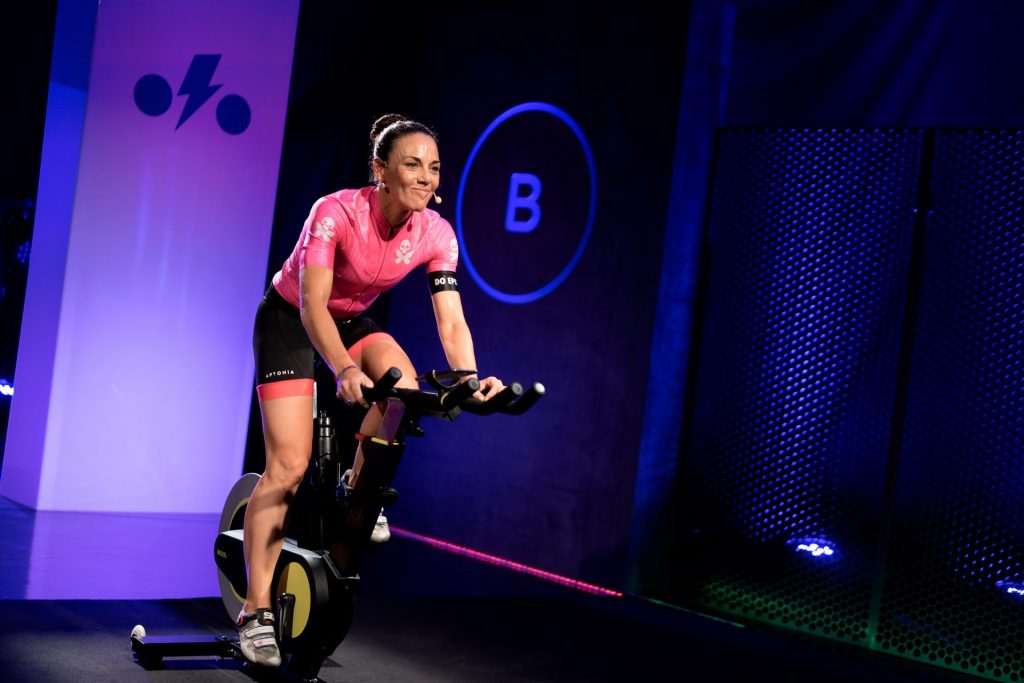
Indoor cycling training routines
In indoor cycling, training routines are varied and adapted to different objectives. One option is to focus on improving cardiovascular endurance through prolonged sessions at moderate intensity. For those looking to boost strength and burn fat, high-intensity interval training (HIIT) is an effective choice, as it combines short periods of maximal effort with active recovery.
In addition, you can work on speed, focusing on cadence and top speed. The choice of routine will depend on your personal goals, and alternating between these options will maximise the benefits of indoor cycling.
Tips for staying motivated
Staying motivated in indoor cycling is a key aspect of long-term success. To achieve this, it is essential to set specific and achievable goals, as this will give you a clear purpose for each training session. In addition, varying your training routines avoids monotony and keeps you challenged.
Social interaction also plays an important role; joining online cycling communities or training with friends provides support and a sense of belonging. Incorporating music or entertainment during your sessions can make the time go faster and increase the fun.
Celebrating your achievements, no matter how small, reinforces motivation. Positive visualisation of your accomplished goals can keep you determined. Keeping a regular training schedule and being patient with yourself are essential, as motivation can fluctuate. Finally, don’t underestimate the importance of rest and recovery, as they are essential to prevent burnout and maintain sustainable performance over time.
Nutrition and hydration for indoor cyclists
Nutrition and hydration play a crucial role in indoor cycling performance. A balanced diet, rich in carbohydrates, protein and healthy fats, together with adequate hydration before, during and after training, is essential to maximise benefits and recovery.
In this context, it is pertinent to mention an actual scientific study that supports the importance of nutrition in sports performance. The study “Achieving an Optimal Fat Loss Phase in Resistance-Trained Athletes: A Narrative Review”, published in 2021 by Sergio Espinar and other authors, focused on dietary-nutritional strategies for resistance-trained athletes. Conducted under the affiliation of institutions such as the Catholic University of Murcia, this study highlights the relevance of an adequate diet to maintain fat-free mass during the weight loss phase in athletes. This finding underlines the importance of balanced nutrition, not only for indoor cycling, but also for sports performance in general.
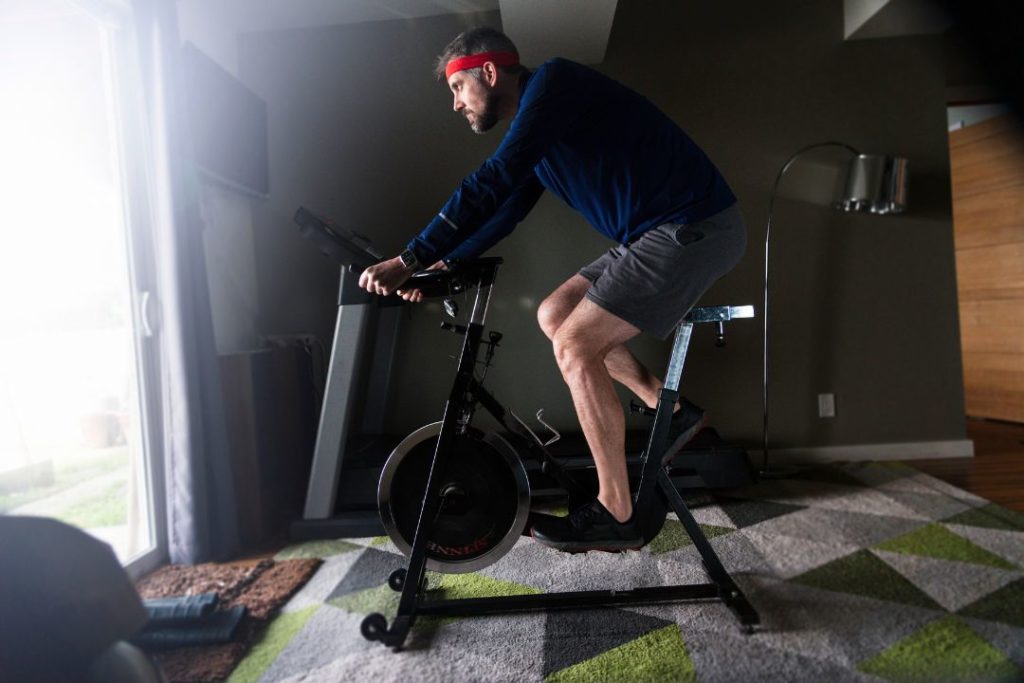
Injury prevention and management
Prevention and management are critical to ensure effective and safe training in the long term. To prevent injury, it is essential to start with a proper cycling posture, adjust it to your needs and ensure that your position is comfortable and ergonomic.
Warming up thoroughly before each training session is essential to prepare your muscles and joints. In addition, it is important to increase resistance gradually to avoid excessive strain. Listening to your body and not overexerting yourself is crucial to avoid overtraining injuries.
If you experience discomfort or injury, it is essential to take immediate action. Resting and allowing the body to recover is essential. Consulting a health professional or physiotherapist is recommended to receive a proper diagnosis and treatment plan. Ignoring injuries or trying to overcome them worsens the situation and leads to chronic problems. Prevention and proper injury management are essential to enjoy the benefits of indoor cycling safely and effectively.
Strategies for post-training recovery
Post-training recovery strategies in indoor cycling are crucial to optimise muscle recovery and prevent injury. Some effective strategies include gentle stretching of worked muscles, adequate hydration, protein and carbohydrate intake for muscle recovery, and adequate rest.
It is also important to avoid overtraining and allow muscles to repair before returning to intense training. Massage and muscle compression help reduce stiffness and improve circulation. These combined strategies contribute to effective recovery and consistent performance in indoor cycling. If there is one indispensable tool for indoor cycling, it is simulators such as BKOOL.
BKOOL is the most complete cycling simulator on the market, try it FREE for 7 days!
 Go to BKOOL
Go to BKOOL
